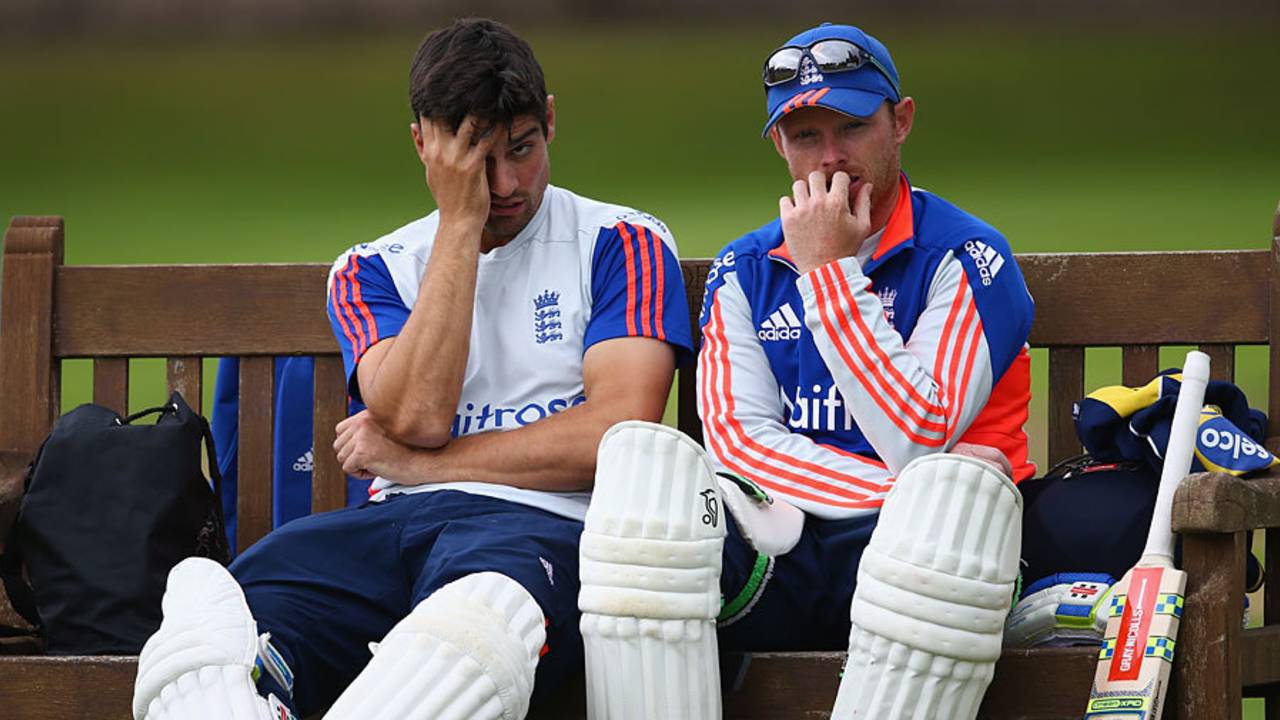Can a cricket team "bounce back" from a defeat by a margin of 405 runs? This is the task facing England as they prepare for the third Investec Ashes Test at Edgbaston. Logic and history suggest not.
A team can fight back from a defeat by 169 runs. This was the margin of England's wholly unexpected triumph
in Cardiff. Australia's sensational turnaround at Lord's could be explained by a number of factors but central to their achievement were the performances of their two best players, Steven Smith and Mitchell Johnson, neither of whom seemed to have much to offer in Cardiff.
At Lord's, Smith, as eccentrically busy at the crease as a squirrel gathering nuts for the winter, gave a masterclass on the first two days, batting Australia into near invincibility with a peerless double-century. On the fourth morning he compounded England's problems with a whimsically insouciant innings of 58 from 48 balls.
Johnson gave the Lord's spectators - champagne corks, hampers, pink hats and all - more than a hint of what England had had to contend with in Australia 18 months ago. In a thrilling display of fast bowling on the second evening, England were reduced to 30 for 4; Johnson, exuding menace as he ran in from the Pavilion end, removing Gary Ballance and Joe Root. Johnson took six wickets in the match but his influence went beyond that. England's best players, Root and James Anderson, contributed 24 runs and two wickets - both taken by Root - between them.
This was the
ninth-heaviest Test defeat, in terms of runs. It can come as no surprise that the winner of each of these nine games was also the winner of the series in each case, usually by a country mile. In the two instances in this millennium Australia beat Pakistan 3-0 in 2004-05, getting the ball rolling with a win by 491 runs in Perth in the first Test - Glenn McGrath took
8 for 24 as Pakistan were rolled over for 72 in the second innings - while Sri Lanka beat Bangladesh 2-0 in 2008-09, wrapping things up with a
465-run win in Chittagong.
The closest-fought series in which such a massive victory has occurred was the Ashes series of 1934 when the sides went to The Oval for the
fifth Test all square. The game was scheduled as a timeless Test but Australia needed only four days to beat England by 562 runs, with Bill Ponsford and Don Bradman putting on 451 for the second wicket in Australia's first innings.
Oddly enough, Alastair Cook's side's defeat is not England's heaviest loss to Australia at Lord's. In 1948, they lost to Bradman's Invincibles by
409 runs.
But at least England can claim to have landed the heaviest punch in all Test history, winning the first Test against Australia in 1928-29 - the first to be played in Brisbane - by
675 runs. This was an interesting game for a number of reasons. Bradman made his Test debut; he scored 18 and 1 and was dropped for the next game. When England's captain, Percy Chapman, declared England's second innings closed with a lead of 741, he became the first man to make a declaration in a Test in Australia. And Harold Larwood, the England fast bowler who was to become famous, or infamous, depending on one's point of view during the Bodyline series four years later, achieved his best Test figures of 6 for 32.
Of course an innings defeat can be just as humiliating as a big runs margin. There has been only one innings victory with a bigger runs margin than 405 and, as it happens, that was achieved by England too. This was the famous game at
The Oval in 1938 when England made 903 for 7 (Len Hutton 364) and won by an innings and 579 runs. Neither Bradman nor the Australian opener Jack Fingleton batted because of injury. This was the fifth Test, and Australia had already secured the Ashes.
Minimal loss of wickets by the victor can also be a cause of significantly hurt pride. A good recent example was South Africa's defeat of England at
The Oval in 2012. South Africa won by an innings and 12 runs which does not sound much but they only lost two wickets in their one innings to England's 20 in two.
To find a real rub your nose in it victory of that sort you have to turn to county cricket. The match was a three-day game between Lancashire and Leicestershire at Old Trafford in 1956. The first day was lost to rain.
The
scorecard tells the story.
Lancashire 166 for 0 (Wharton 87*, Dyson 75*) and 66 for 0 (Wharton 33*, Dyson 31*) beat
Leicestershire 108 (Statham 4-32, Hilton 3-19) and 122 (Hilton 5-23, Statham 3-36) by ten wickets.
